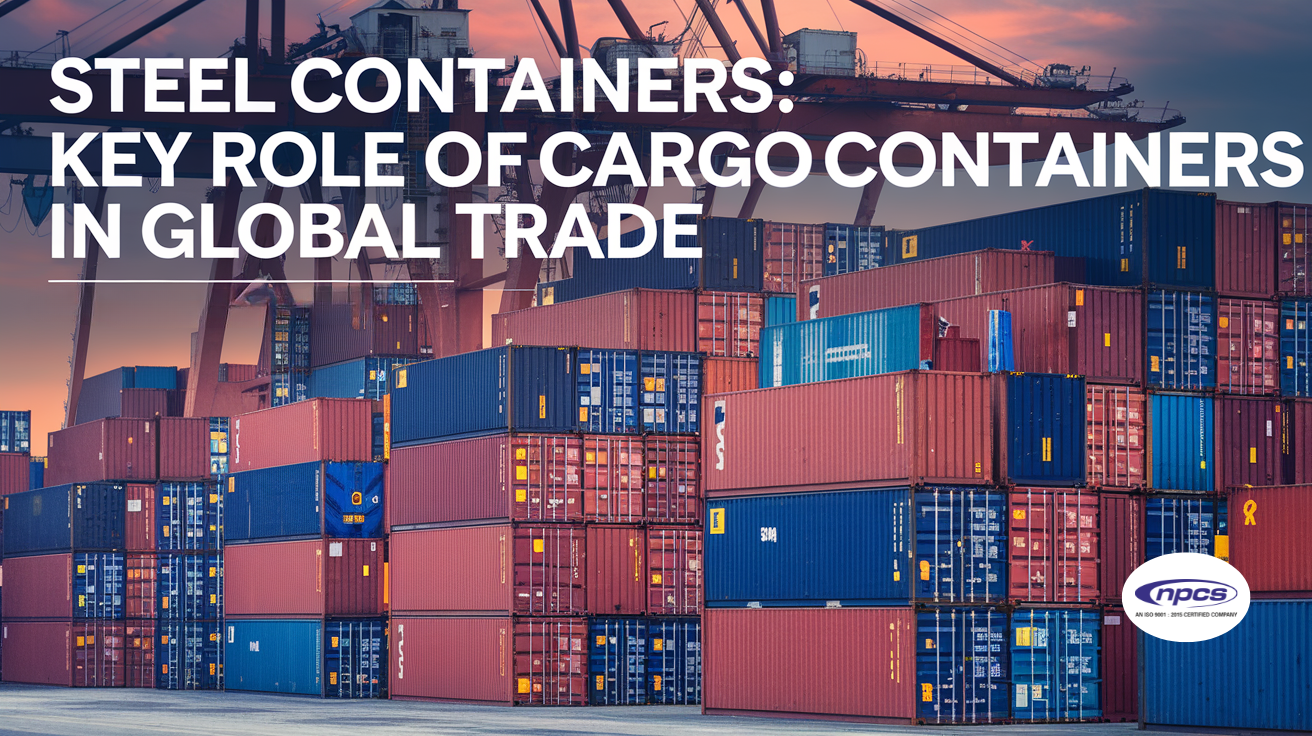Perhaps there is no other invention in the escalating system of international relations and interdependence. That has revolutionised commerce like the steel container. Also called intermodal containers, these strong and standardized boxes are the lifeblood of international reach. Making the movement of goods from one country to another a relatively easy affair. Their emergence over half a century ago has brought considerable changes that make them. Today’s essential element in the world economy. This blog post describes the importance of steel container in trade and will substantiate. This claim using data analysis and qualitative results.
The Genesis of the Steel Container Revolution
A brief history of the shipping containers can be traced back to 1956 when Malcolm McLean, an American enterprise, came up with the idea of invoking the standardised units for shipping. The innovation arose out of the desire to cut down on the cost of shipping and improve on the side transfer of goods from ships to trucks and trains. Traditionally, before the containers, the cargo was physically thrown and/or lifted and dropped in the holds, a process that is as cumbersome and severely involving human intervention as it sounds, referred to as the break-bulk shipping.
Berry’s vision was brought into reality when he founded the Sea-Land Service, and in 1956, its first vessel. The Ideal X has 58 containers on board. This initial succesved the way for what will eventually be the international standard. The transition to using containers brought out a marked decrease in shipping costs. Which overall were said to have been slashed by up to 90%. In some quarters due to fewer man hours, faster transit time, and other facilitations.
Data-Driven Insights into Container Use
The degree of penetration of steel containers into the global economy has been described as awesome. As per the data available with the World Shipping Council. There are around 38 million TEUs in use globally, and the industry deals with more than 800 million TEUs per annum. This scale is evidenced by the fact that each of the current generation of container vessels carries an average of about 20,000 TEUs.
The increase in trade since containers were invented is further proof of their use. After that, the international fleet multiplication grew considerably in the subsequent decades particularly with the increase in global trade. According to the data, the volume of container trade has spiked over 50 times by 2020 from the level of 1980 and crossed 18 trillion tones. This he says has been the major cause of globalisation, given that it enhances the economic relations of various countries.
Project Report Related To : Steel Containers (Cargo Container) Project Report
Qualitative Impact on Global Trade
However, as is evident below, the qualitative effects of steel containers on world trade extend beyond the numbers mentioned above. Of course, cost reduction and efficiency have made products cheaper and more accessible worldwide. Using containers in this manner reduces the likelihood of theft, damage, or loss.
Qualitative measures such as standardisation make up the other indispensable element in the facet. These are rectangular-shaped and portable metallic boxes of sizes.That can range from 20 to 40 feet long and are transportable. On various modes of methods such as on ships, trains, and trucks.Since they are stackable. This enhances the transfer of containers from one form of transport to. The other, known as intermodal transport.Hence cutting down on the time and means required for handling the containers.
The following are some of the merits; there are benefits environmentally as well. They promote the conveyor system and thus replace several handling points, thereby increasing productivity and reducing emissions. The Container Industry Association claimed that by switching to containerisation carbon dioxide emissions were cut by billions of tons since 1956. Such efficiency has ensured that the social cost brought-about by globalization and international trade containerisation,reduced.
The Geopolitical and Economic Significance
This article goes further to show that steel containers have also been instrumental in defining geopolitical and economic political settings. They have played a significant role in the development of export-orientated countries, most of which are located in Asia. For instance, China has now assumed the position of the largest container port in the world and the largest shipping container with over 170 million TEUs. This paper explains how the country’s hub in the globalisation process is directly linked with its efficiency in the containerisation of shipping that made it the ‘World’s Factory’.
Port cities have taken the central place in the global supply chain, with the largest 25 facilities similarly handling mFactory. half of the world’s containers. Some of these ports include the Port of Singapore, the Port of Shanghai, and the Port of Rotterdam, and each handles millions of TEUs per year. These ports have advanced to partly being economic engines of their respective regions and the nation as a whole.
Challenges and Future Outlook
Nevertheless, the global container industry encountered a number of problems. Some risks include the capacity and the fluctuating demands around the world and the tension on the geopolitical front. For instance, the Covid-19 outbreak led to disruptive measures, making vessels stay unlawfully in ports, increasing voyage time, and raising transportation costs. At the beginning of the year 2021, the Baltic Dry Index, which measures shipment rates, hit the higher levels, which have not been registered since early 2009.
The following break in patient flow can be expected in the future: Technological trends in the area of container logistics gradually reformed the industry, such as automated and digital processes. Robotization of ports with robotic cranes and AI-controlled operations will be used to optimise the use of labour. Blockchain is also being adopted because it brings in even more transparency as well as security in supply chain management.
Sustainability remains a critical focus. Especially the pressure to reduce the adverse impact that the shipping industry has on the environment is forming a trend. The concepts of cleaner fuels and electric and hydrogen-powered ships are used in order to address the challenges mentioned above. The IMO has laid down its planned emission reduction for the greenhouse gases for the ships to 50 percent by 2050 from the year 2008.
Conclusion
Receptacles are just part of the container. A steel container is much more than that; it is the wheels of the global economy that.The transport of goods across borders in an efficient and cheap way. Thanks to their standardised character combined with principles of intermodal transportation. They greatly contributed to the creation of logistics and stimulation of world economy. Despite this there is significant prospects for the growth of steel containers. In the future, hi-tech and sustainable developments are continuing. To build on the importance of steel containers to the global economy.
It can therefore be projected that steel containers are a major commodity that has a bright future in the global economy. Closely related to this is the role of technology in decreasing costs, enhancing productivity, and advancing globalisation initiatives. Thus, the simple and yet indispensable invention of the steel container will continue to occupy its central role in the global exchange of products and concepts.
























